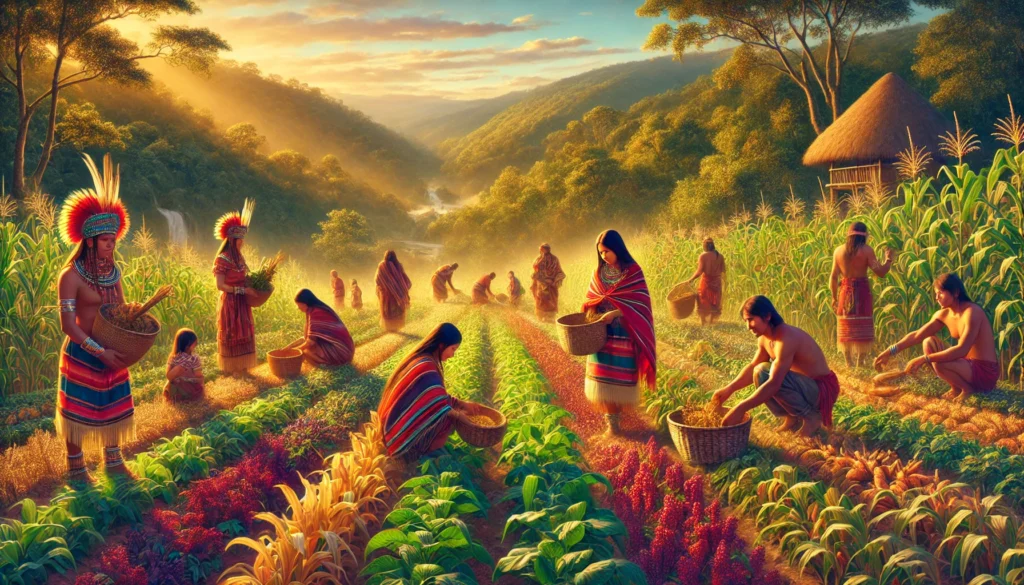Fun Fact: Did you know that over 75% of the world’s crop diversity has been lost in the last century?
From the food on our plates to the economy of millions of farmers, crop diversity plays a vital role in sustaining human life. However, as the planet warms, this diversity—our safety net against food insecurity—is under grave threat. Climate change is more than rising temperatures; it’s a force that affects rain patterns, soil quality, pests, and diseases, all of which directly impact the variety of crops we grow.
But why should this matter to you? Let’s dive into the intricate relationship between climate change and crop diversity and how it ultimately shapes our future.
Why Crop Diversity Matters
Picture walking into a grocery store where every shelf holds only a single type of grain, one kind of fruit, and one variety of vegetables. Sounds bleak, right? Crop diversity ensures not only variety in our diets but also resilience in agriculture. Diverse crops can adapt to different environmental conditions, making them crucial for combating pests, diseases, and even climate extremes like droughts and floods.
For instance, rice—a staple for more than half the global population—has thousands of varieties. Some are resistant to flooding, while others thrive in drought. This diversity is our insurance against future agricultural challenges. But climate change is narrowing this safety net, and here’s how.
How Climate Change Threatens Crop Diversity
Changing Weather Patterns
Climate change disrupts weather patterns, bringing unpredictable rainfall and prolonged droughts. For crops that depend on specific conditions, this spells disaster.
Example: India’s wheat belt, which feeds millions, is experiencing shorter winters. This is problematic because wheat requires cold temperatures to thrive. Similarly, erratic monsoons are making it harder to grow rice in traditional areas.

Soil Degradation
Rising temperatures accelerate soil degradation. The loss of organic matter and vital nutrients affects crops’ ability to grow and thrive. Without fertile soil, farmers are forced to abandon traditional crops for those that require fewer resources, further reducing diversity.
Case Study: In Kenya, fertile lands are turning arid, pushing farmers to grow drought-tolerant crops like maize. However, this shift reduces the cultivation of indigenous crops such as sorghum and millet, which are rich in nutrients.
Increased Pests and Diseases
Warmer climates create ideal breeding grounds for pests and diseases. This not only reduces yields but also forces farmers to abandon vulnerable crop varieties.
Anecdote: Coffee, a global favourite, is under siege by a fungus called coffee leaf rust, which thrives in warmer temperatures. Regions that once produced robust coffee varieties are now struggling to maintain output, pushing farmers to plant less diverse but more resistant strains.
Loss of Traditional Knowledge
As communities lose native crops due to climate changes, they also lose centuries-old knowledge about cultivating and using these plants. This erosion of cultural heritage further diminishes crop diversity.
Example: Indigenous farming communities in the Andes once grew over 4,000 potato varieties. Today, many of these varieties are vanishing, along with the traditional wisdom tied to them.
The Domino Effect on Global Food Security
Crop diversity doesn’t just ensure variety; it ensures survival. With fewer crop varieties:
Nutrition declines: Monoculture farming leads to nutrient-deficient diets.
Economic vulnerability rises: Farmers dependent on a single crop face ruin if it fails.
Global food insecurity intensifies: Reduced diversity makes the global food system less resilient to shocks like droughts or floods.
For instance, the Irish Potato Famine of the 1840s, caused by the reliance on a single potato variety, wiped out food supplies for millions. Without diverse crops, similar catastrophes could occur on a global scale.
Solutions: Protecting Crop Diversity in a Warming World
Seed Banks
Organizations like the Svalbard Global Seed Vault in Norway safeguard seeds from around the world, ensuring we don’t lose valuable crop varieties.
Climate-Resilient Crops
Scientists are developing climate-resilient crop varieties that can withstand droughts, floods, and heat. For example, IRRI (International Rice Research Institute) introduced flood-resistant rice varieties in South Asia.
Promoting Indigenous Crops
Indigenous crops, adapted to local climates, offer a sustainable alternative. For instance, quinoa, native to South America, thrives in harsh conditions and is highly nutritious.
Sustainable Farming Practices
Agroforestry (integrating trees with crops) and crop rotation enrich the soil and reduce reliance on monocultures, preserving biodiversity.
Conclusion: A Call to Action
Climate change is not a distant problem; it’s one that’s reshaping the very foundation of our food systems today. Protecting crop diversity is crucial—not just for farmers but for every individual who relies on food for survival. From supporting local farmers who grow diverse crops to advocating for policies that address climate change, everyone has a role to play.
Let’s act now to ensure future generations inherit a planet as rich in biodiversity as the one we enjoy today.
Author’s Note
I wrote this blog because I believe food is a bridge that connects us all. Climate change and its impact on crop diversity may seem like a complex topic, but understanding it is the first step toward meaningful change. Let’s protect what feeds us—our planet’s incredible diversity.
G.C., Ecosociosphere contributor.
References and Further Reading
- Svalbard Global Seed Vault
- FAO on Biodiversity and Food Security
- Sibanda, A. (2021). The role of environmental education in climate change mitigation and adaptation: The case of Gwanda rural district, Zimbabwe. https://core.ac.uk/download/588589093.pdf
- Nurturing Spirits: Unveiling the Connection between Nature and Spirituality – All Divinity. https://alldivinity.com/nurturing-spirits-unveiling-the-connection-between-nature-and-spirituality/




